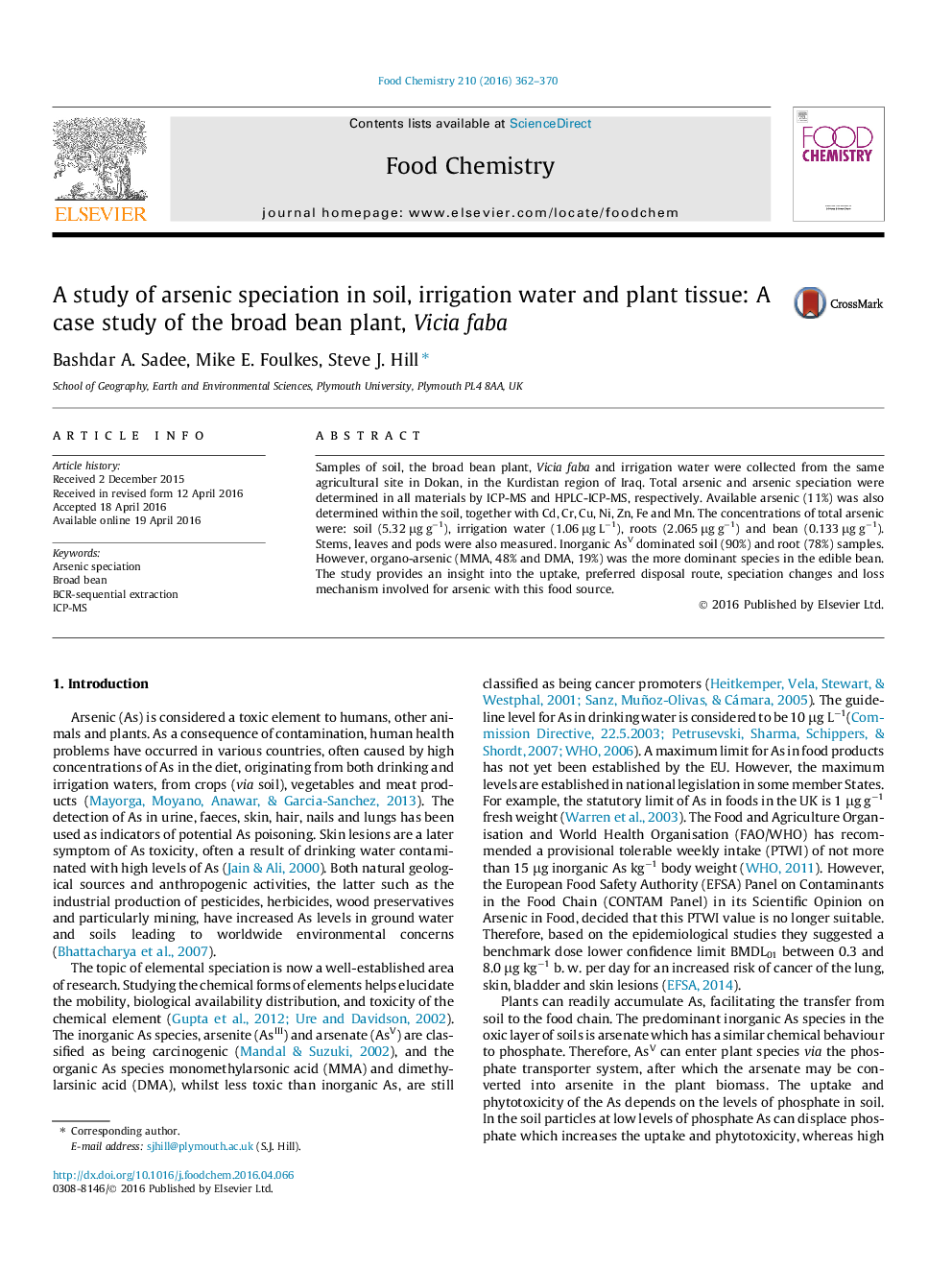| Article ID | Journal | Published Year | Pages | File Type |
|---|---|---|---|---|
| 7588291 | Food Chemistry | 2016 | 9 Pages |
Abstract
Samples of soil, the broad bean plant, Vicia faba and irrigation water were collected from the same agricultural site in Dokan, in the Kurdistan region of Iraq. Total arsenic and arsenic speciation were determined in all materials by ICP-MS and HPLC-ICP-MS, respectively. Available arsenic (11%) was also determined within the soil, together with Cd, Cr, Cu, Ni, Zn, Fe and Mn. The concentrations of total arsenic were: soil (5.32 μg gâ1), irrigation water (1.06 μg Lâ1), roots (2.065 μg gâ1) and bean (0.133 μg gâ1). Stems, leaves and pods were also measured. Inorganic AsV dominated soil (90%) and root (78%) samples. However, organo-arsenic (MMA, 48% and DMA, 19%) was the more dominant species in the edible bean. The study provides an insight into the uptake, preferred disposal route, speciation changes and loss mechanism involved for arsenic with this food source.
Keywords
Related Topics
Physical Sciences and Engineering
Chemistry
Analytical Chemistry
Authors
Bashdar A. Sadee, Mike E. Foulkes, Steve J. Hill,
